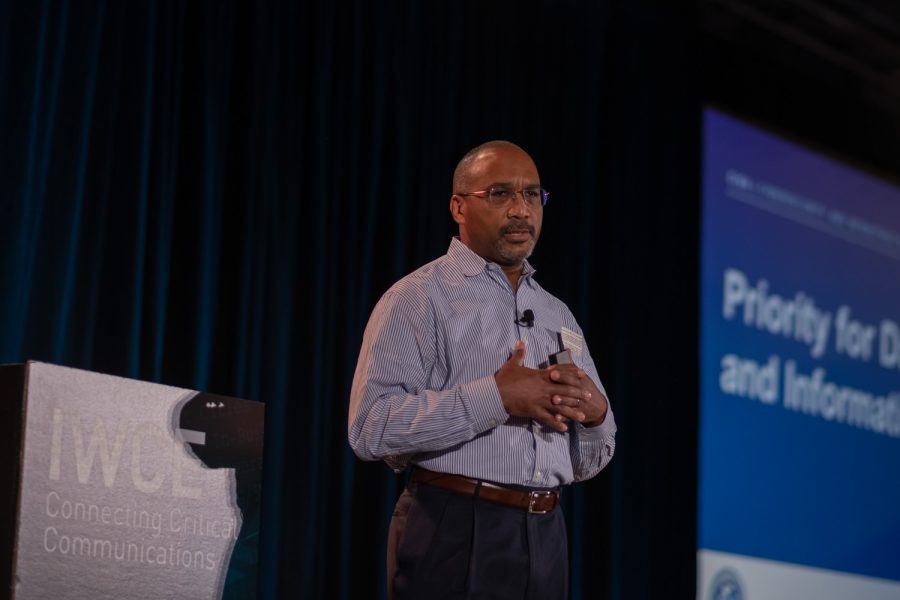Partnership and collaboration must be the foundation for emergency communications
I’m from a little town in West Texas. As a Texan, I like getting straight to the point: I believe that emergency communications are a matter of national security. Because this message is so important, the Cybersecurity and Infrastructure Security Agency (CISA) has designated this April as the first-ever Emergency Communications Month.
At CISA, we are focused on two words: partnerships and culture. We cannot move forward in improving our nation’s security by ourselves; it requires partnership. We cannot move forward in overcoming challenges without fostering Collaboration, Innovation, Service, and Accountability—our CISA core values.
What does this have to do with emergency communications? Everything. Public-safety officials, critical-infrastructure officials, national-security and emergency-preparedness officials—a group that I like to call Vital Nationwide Service Officials—working together to improve security and resiliency.
In the case of an emergency, all you need to do is call 911 and help is on the way. However, most people do not realize that the 911 operating system only scratches the surface of emergency communications. In fact, emergency communications is a complex ecosystem with multiple stakeholders and moving pieces. It requires strong partnerships and collaboration between emergency responders, the government, information technology and communications providers, non-governmental organizations and even private citizens.
Emergency communications are what we rely on in times of threat, conflict, or disaster. You know those Amber Alerts we all get on our mobile devices? That’s emergency communications. Curfew and evacuation announcements? Emergency communications. Emergency communications support vital nationwide services. They include the ability of voice, video, data, and information services to be delivered on demand, as needed, and as authorized to perform mission-essential activities. The field has multiple layers requiring the interaction of people, training, and governance frameworks.
For instance, when a citizen calls 911, a notification of a hazard, incident or emergency is sent to a telecommunicator, who then passes it to a government official, who uses government-to-government communications systems to create and send an incident management team to address the emergency. For complex or national-level incidents, government officials would utilize the National Incident Management System and the Incident Command Structure to organize protection, response, or recovery teams to address the situation and advise other supporting organizations as the incident unfolds. As a multifaceted system, emergency communications becomes more resilient, secure and reliable through partnership and collaboration.
The partnership and collaboration that are so critical to the field of emergency communications are both embedded into the foundation of CISA’s mission. The agency’s stakeholders identify their challenges and guide CISA to develop resources to address those challenges. CISA works consistently with SAFECOM, National Council of Statewide Interoperability Coordinators, and the Emergency Communications Preparedness Center (ECPC), demonstrating a model of teamwork that shows how people coming together can advance interoperable communications.
In fact, CISA’s emergency communications work priorities are set by SAFECOM. It is this model of collaboration that advances communications in this sector and that the agency aims to replicate in its mission. The best time to share information, and build best practices and procedures is not in the middle of a storm but during day-to-day implementation. CISA will focus on partnership and collaboration as it celebrates and promotes Emergency Communications Month.
This year marks the country’s first Emergency Communications Month observance. CISA is designating the month of April as a time to highlight the important work done by public safety and emergency communicators. The bedrock of CISA’s emergency-communications mission is the ability of emergency-response providers and relevant government officials to communicate across jurisdictions, disciplines and levels of government, as needed and as authorized. Throughout the month, CISA will promote its mission and role in emergency communications to build awareness around this critical field. Additionally, the agency will use the month to highlight how quickly evolving fields like cybersecurity play in the space.
CISA is also encouraging all states, territories, tribes and the District of Colombia—as well as nationwide service partners—to recognize and declare April as Emergency Communications Month. For more information on Emergency Communications Month, please visit cisa.gov/emergency-communications-month.
Billy Bob Brown, Jr., is Executive Assistant Director for Emergency Communications for the Cybersecurity and Infrastructure Security Agency (CISA).


















